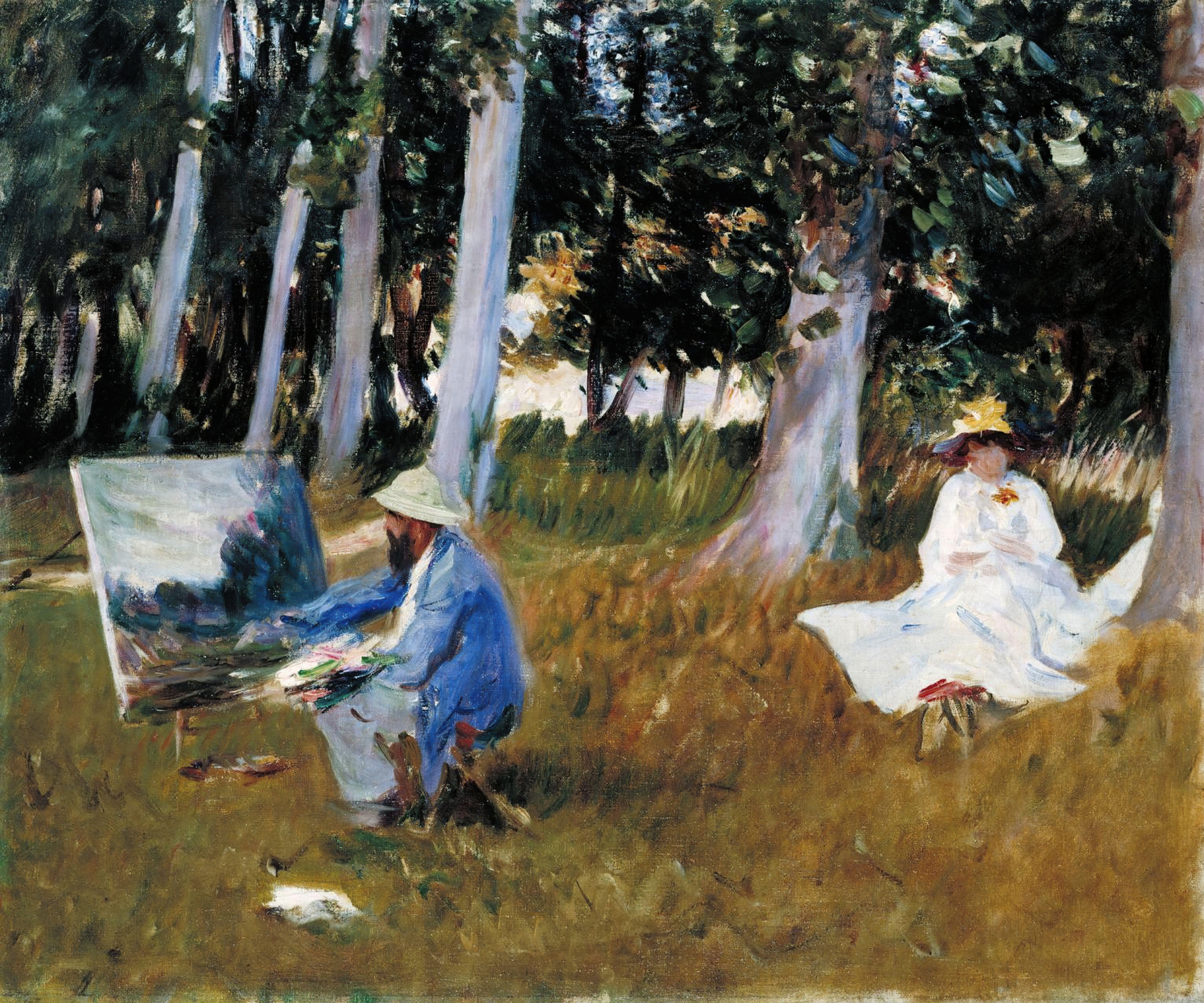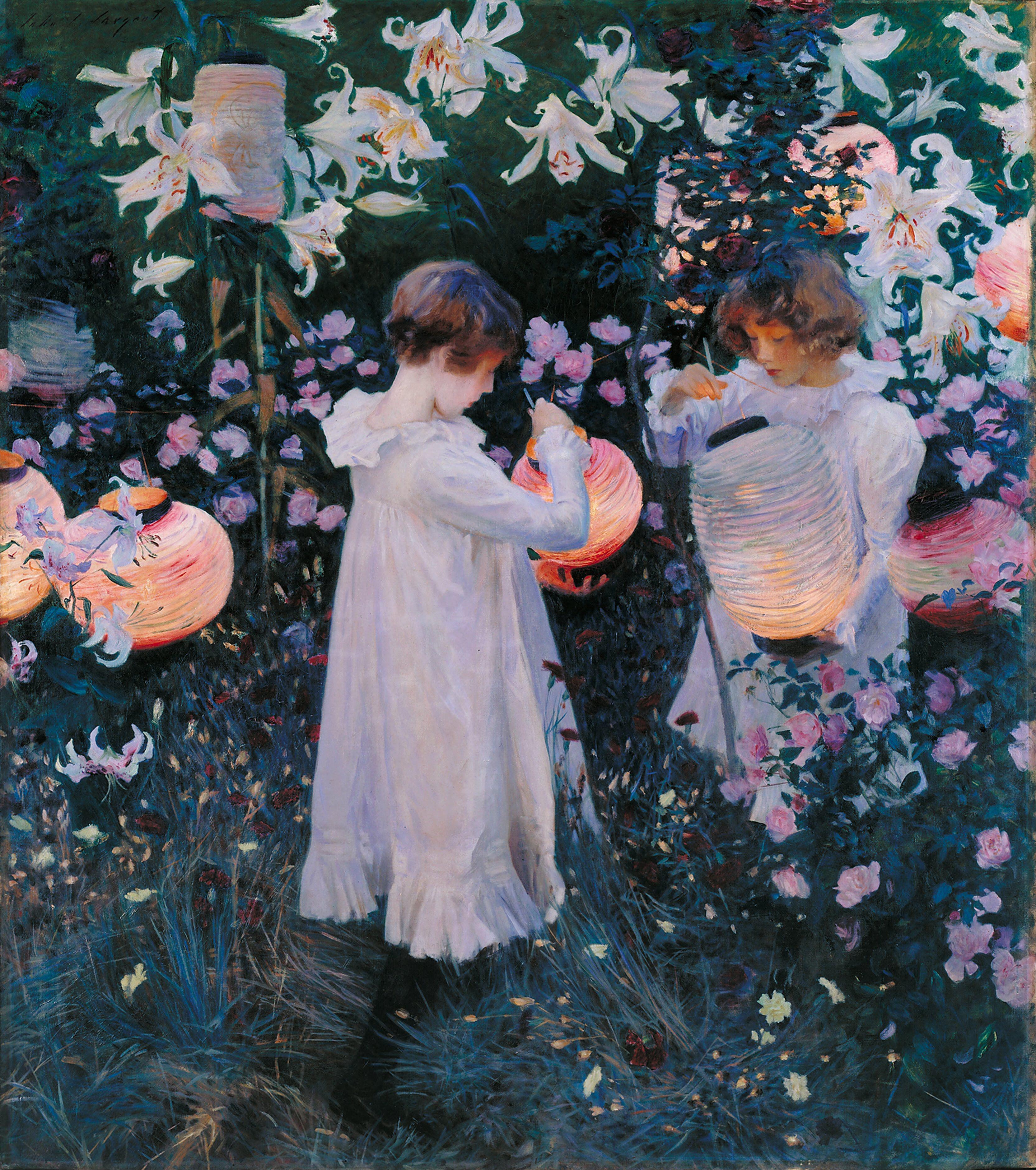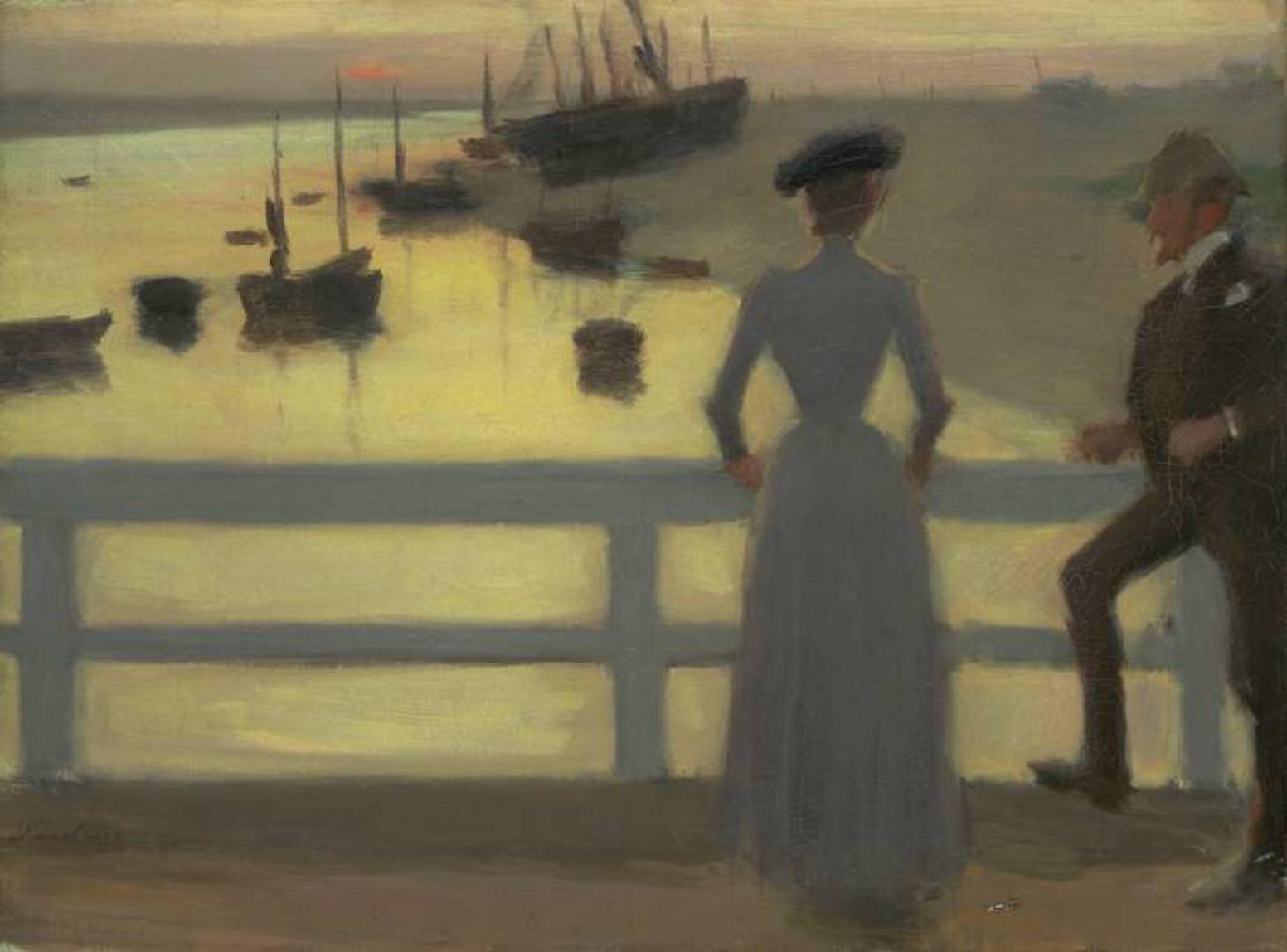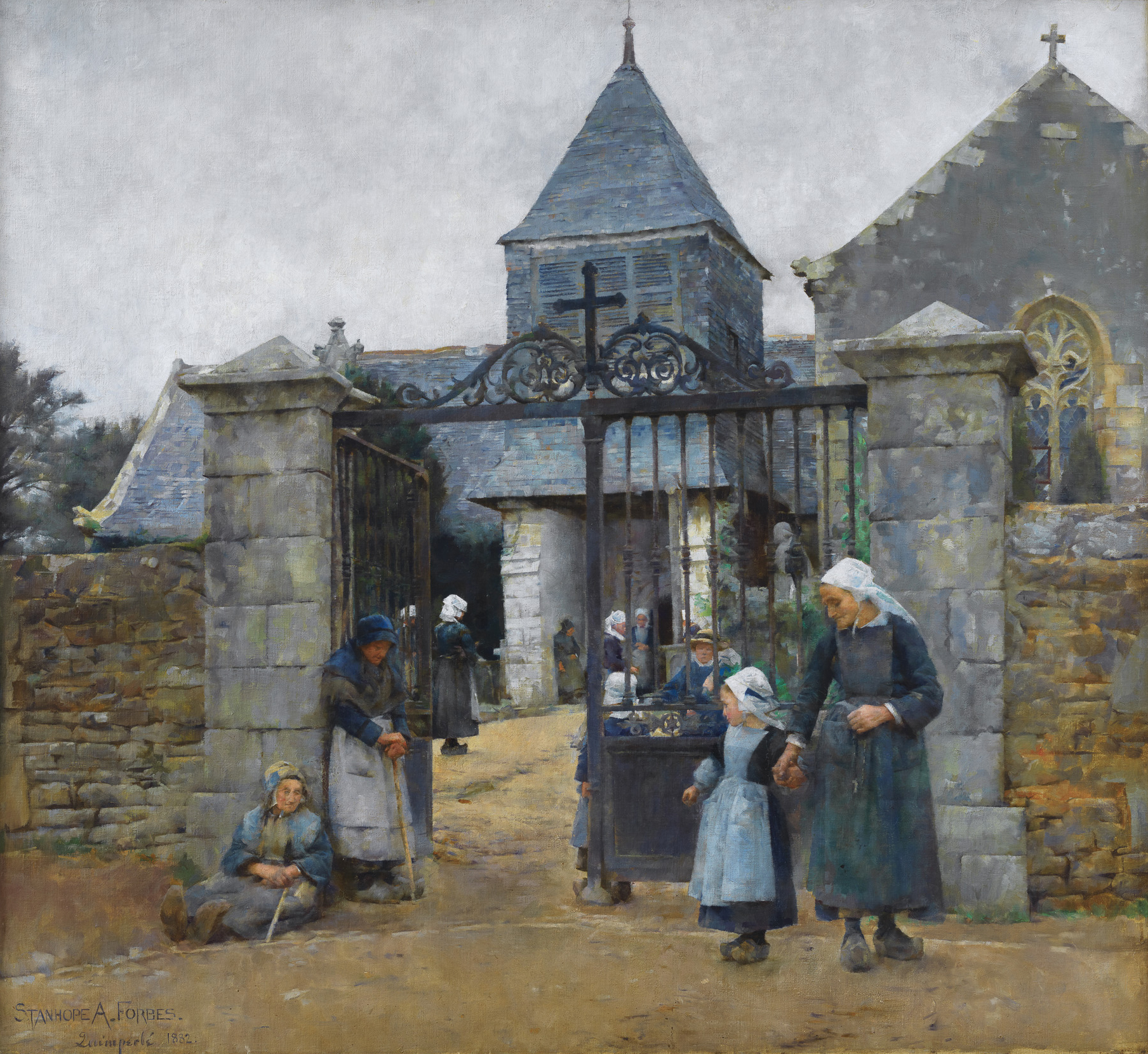‘Reactions to the French in the 1870s varied from outrage to curious interest’: Impressionism's painstaking ten year journey to be taken seriously by the Brits
Claude Monet and Camille Pissarro spent time in London, but it took James McNeill Whistler to act as artistic bridge with Britain and the ‘sweetened’ Impressionism of Jules Bastien-Lepage to inspire most homegrown painters.

Barely four years before Impressionism officially launched in Paris, two of its leading lights — Claude Monet and Camille Pissarro — fled the city and the depredations of the Franco-Prussian War, crossing the channel to seek refuge in London. The transition was a bumpy one, with Pissarro declaring that: ‘It is only when you are abroad that you realise how beautiful, grand and hospitable France is.’ Monet recalled that his first seven-month stay in London was ‘miserable’, but his enchantment with the local fog would draw him back in later years to focus extensively on views of the Thames. For a while, the duo settled down to painting the landmarks of London that any tourist would have noted — the city’s parks, views and the Thames — as well as frequenting the Café Royal, Maison Bertaux and the British Museum Reading Room.
‘Reactions to the French in the 1870s varied from outrage to curious interest’
In the meantime, French art dealer Paul Durand-Ruel, also driven out of France, opened his gallery in Bond Street and began showing works by exiled French artists. He was not fantastically successful, but the presence of the French contingent in London did have some limited impact on artists in the capital’s circles. Reactions in the early 1870s varied from outrage to curious interest. Impressionist ideas gradually began to seep into the British art scene, helped undoubtedly by the fact that many painters working in Britain had spent time training and working in France. However, 10 years would pass before French Impressionism was taken seriously and its ideas became established in British art.

The Newlyn School artist Harold Harvey painted the idyllic Sunshine and Showers in 1907, the same year as Picasso completed Les Demoiselles d’Avignon.

Derided at first by sceptical traditionalists, Sargent’s Carnation, Lily, Lily, Rose swiftly won adulation for its light and delicate touch.
The seeds were sown by James Abbott McNeill Whistler, who had arrived in London in 1859 from his native America and acted as something of a bridge between his fellow students in Paris, Monet and Pierre-Auguste Renoir, and the younger generation of British painters, including Walter Sickert and Philip Wilson Steer. His views of the Thames, painted in the 1870s in shades of grey-blue, managed to combine the influence of Japanese prints with mist and fog — a far cry from Impressionism’s sunny panoramas, perhaps, but a radically different way of approaching scenes that prioritised feeling and atmosphere above detail. Whistler did a great deal to introduce to Britain the rapid brushstrokes and awareness of light and shade that were the Impressionists’ stock in trade.
Whistler’s contemporary, John Singer Sargent, was another American who left his native country to find fame on the other side of the Atlantic. He had trained in France and met Edgar Degas and Monet. Although he was best known in later life as a portraitist, his early works show a fascination with landscape that echoes that of the Impressionists. Claude Monet Painting by the Edge of a Wood (1887), which shows Monet hard at work, is the perfect embodiment of the making of an Impressionist picture and his Carnation, Lily, Lily, Rose (1885–86), painted entirely out of doors, was seen by the Art Journal as an example of the ‘dab and spot’ school. Its ‘Frenchified’ style was criticised, but the work was bought by Tate and the critic Roger Fry later pointed out that ‘what thrilled us was the fact that this picture was the first feeble echo which came across the channel of what Manet and his friends had been doing with a far different intensity for 10 years or more’.

In Steer’s The Bridge, painted in Walberswick, Suffolk, the misty light of a summer’s evening casts the figures into opacity, raising questions about their relationship.
Steer was particularly impressed by it when it was shown at the Royal Academy (RA). In his moody The Bridge, painted a couple of years after Sargent’s picture, the relationship between the two figures is implied, rather than explicit, as they stand staring over Walberswick estuary in Suffolk in the dim evening light. Steer worked in a number of different styles simultaneously and the small beach scenes he painted between 1888 and 1894 are clearly indebted to French art, which is hardly surprising, considering he had received his main artistic training in Paris.
Another of Whistler’s assistants, Sickert — something of a maverick presence on the British art scene — was also deeply indebted to French art, at least at the beginning of his career. He was drawn to the city rather than the countryside and, in 1883, he travelled to Paris and met Degas, whose use of pictorial space and emphasis on drawing would have a powerful effect on his work and he developed a personal version of Impressionism, favouring music halls and low-life theatre.
In 1888, Sickert and Steer joined the New English Art Club. A year later, the pair organised an exhibition of London Impressionists, together with the more enlightened members of the Club. This new exhibiting body, the adherents of which described themselves as ‘Anglo-French’, had been founded in 1886 as an alternative to the RA in much the same way that the Impressionists in Paris had founded their exhibiting society 12 years earlier away from the official Salon. For a while, it became one of the most important centres for this new art. Whistler was invited to contribute and sent works to the show, although he soon resigned. Alexander Mann, who had trained in Paris, was invited to become the first Scottish member of the Club and was swiftly followed by several of his friends, notably John Lavery and painters from Glasgow.
Exquisite houses, the beauty of Nature, and how to get the most from your life, straight to your inbox.

Outside Chapelle Saint-David in Quimperle, 1882, by Stanhope Alexander Forbes, who captured the dignity of ordinary lives in the Brittany town with an unsentimental eye.
Wilfrid de Glehn shared a long and creative friendship with Sargent, through which he adopted his fluid and luminous painterly language. Both were enchanted by Impressionist freedoms, yet, where Sargent dazzled with psychological tension and theatrical effect, de Glehn’s portraits are softer, more companionable. He had a deep, lyrical relationship with the French countryside and it was in France — particularly in the fields of Provence and Normandy — that he found a landscape to match his temperament: gentle, sun-soaked and deeply human, distilling moods into pure, affectionate light.
The rural, rather than the urban, aspects of Impressionism, seem to have struck a chord with many English artists (and still do today, as the current selling exhibition at London art gallery David Messum Fine Art demonstrates). It was the French naturalist tradition of peasants in fields that was particularly appealing to the English sensibility, promoted by artists such as Jules Bastien-Lepage — whose work was described by Émile Zola as ‘Impressionism corrected, sweetened and adapted to the taste of the crowd’ — that inspired many British artists of the 1880s. These included Henry Herbert La Thangue and George Clausen, both founding members of the New English Art Club, who had fled across the channel to learn as much as they could about painting such subjects and ‘to forget as much as they can of the theory and practice’ of the RA schools.
In the summer of 1881, La Thangue went with a friend, the artist Stanhope Alexander Forbes, to Brittany in northern France, laying the groundwork for painting out of doors that would be built on in the years to come. A host of artists congregated around La Thangue in Concarneau, fascinated by his broad-brush naturalism. For his part, Forbes took the painting of Brittany to heart and captured its grey, steely colours when working in the small Breton town of Quimperlé.
Far from London, in Cornwall, Newlyn saw the emergence of its own school in the 1880s, which marked a distinct shift in British painting, away from the artificialities of the RA and toward a raw realism rooted in everyday life that owed something to the example of French Realism. Harold Harvey, with his wife, Gertrude, was part of a younger group of artists in the area. He had trained with Bastien-Lepage, adopting his rural naturalism before evolving into a bolder, more design-based realism of the early 20th century. Sunshine and Showers is a masterful work of colour and beauty, retaining the gentle reportage of the early Newlyn tradition, yet demonstrating Harvey’s own Impressionistic approach to the sympathetic social realism of the Newlyn School founders and their French predecessors.
By this stage, the early days of Impressionism were well and truly over. In the same year that Sunshine and Showers was painted — 1907 —Picasso was putting the finishing touches to Les Demoiselles d’Avignon. Its splintered planes, disregard of conventional perspective and embrace of the primitive would upend all the certainties of European art and its notions of what the world was supposed to look like to embrace a bewildering, discordant picture founded on a new kind of modernity.
This feature originally appeared in the June 25, 2025, issue of Country Life. Click here for more information on how to subscribe